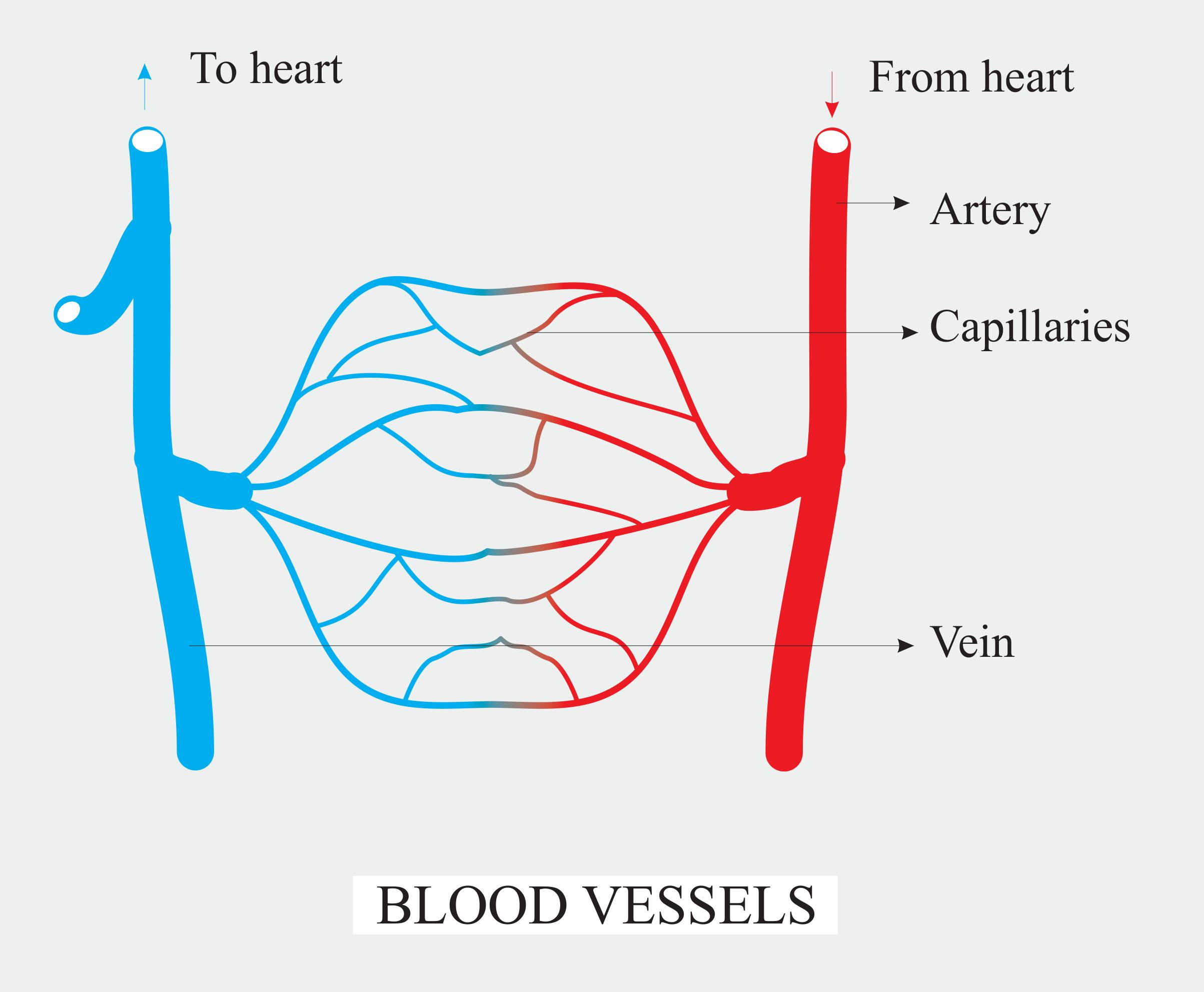
The thinnest blood vessels in the human body are
(a) Arteries
(b) Veins
(c) Capillaries
(d) Any of these
Answer
552.6k+ views
Hint: The blood vessels that supply blood to the walls of large blood vessels and also connect arterial blood flow and venous blood flow.
Complete answer:
Tubular networks throughout the body that permits blood flow from various organs to the heart and from heart to various organs are called blood vessels. Blood from the heart passes through smaller vessels called arteries, arterioles, and capillaries, and blood from the tissue passed through vessels of larger diameter called veins and venules. Arterial blood flow and venous blood flow are connected by capillaries which are the smallest and thinnest blood vessels of the body. Capillaries also supply blood to the walls of blood vessels.
Additional Information: - Arteries and veins have three layers namely tunica externa, tunica media, and tunica interna whereas capillaries contain only one thick layer of simple squamous epithelium or endothelium.
- Tunica externa is made up of fibrous connective tissue, tunica media is made up of smooth muscle cells and tunica interna is made up of endothelium and basement membrane.
- In capillaries absence of smooth muscles and connective tissue layer helps in the rapid exchange of materials between blood and tissues.
- In addition to three layers in arteries and veins, arteries contain two elastic laminae on both sides of tunica media
So, the correct answer is 'capillaries'.
Note: In the walls of large blood vessels like aortic arches, small vessels are present. They are called vasa vasorum, also called vessels of vessels.
compared to capillaries and veins in arteries blood pressure is relatively high and it flows with jerks, so they are covered by a pair of elastic laminae.

Complete answer:
Tubular networks throughout the body that permits blood flow from various organs to the heart and from heart to various organs are called blood vessels. Blood from the heart passes through smaller vessels called arteries, arterioles, and capillaries, and blood from the tissue passed through vessels of larger diameter called veins and venules. Arterial blood flow and venous blood flow are connected by capillaries which are the smallest and thinnest blood vessels of the body. Capillaries also supply blood to the walls of blood vessels.
Additional Information: - Arteries and veins have three layers namely tunica externa, tunica media, and tunica interna whereas capillaries contain only one thick layer of simple squamous epithelium or endothelium.
- Tunica externa is made up of fibrous connective tissue, tunica media is made up of smooth muscle cells and tunica interna is made up of endothelium and basement membrane.
- In capillaries absence of smooth muscles and connective tissue layer helps in the rapid exchange of materials between blood and tissues.
- In addition to three layers in arteries and veins, arteries contain two elastic laminae on both sides of tunica media
So, the correct answer is 'capillaries'.
Note: In the walls of large blood vessels like aortic arches, small vessels are present. They are called vasa vasorum, also called vessels of vessels.
compared to capillaries and veins in arteries blood pressure is relatively high and it flows with jerks, so they are covered by a pair of elastic laminae.

Recently Updated Pages
Master Class 12 Business Studies: Engaging Questions & Answers for Success

Master Class 12 Economics: Engaging Questions & Answers for Success

Master Class 12 English: Engaging Questions & Answers for Success

Master Class 12 Maths: Engaging Questions & Answers for Success

Master Class 12 Social Science: Engaging Questions & Answers for Success

Master Class 12 Chemistry: Engaging Questions & Answers for Success

Trending doubts
What is meant by exothermic and endothermic reactions class 11 chemistry CBSE

Which animal has three hearts class 11 biology CBSE

10 examples of friction in our daily life

One Metric ton is equal to kg A 10000 B 1000 C 100 class 11 physics CBSE

1 Quintal is equal to a 110 kg b 10 kg c 100kg d 1000 class 11 physics CBSE

Difference Between Prokaryotic Cells and Eukaryotic Cells




